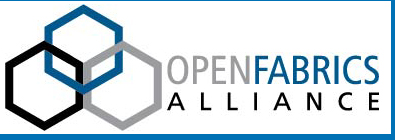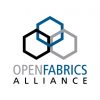Five-Day Event Yields Insight into RDMA HPC Innovation Through OpenFabrics Software
On April 8, the OpenFabrics Alliance (OFA) wrapped its 12th annual workshop, centered on furthering the development of networking technology. The workshop expanded its traditional focus on high performance computing by recognizing the impact that networks are having on all forms of modern data centers. A record 120 users and developers gathered in Monterey, California, to discuss technical breakthroughs, development opportunities and application customization in seven key technical areas. Collectively, attendees represented more than 45 companies, industry organizations and institutions from around the globe.
Depth of Content
The agenda included 50 presentations framed as state-of-the-industry overviews, real-world case studies, new methodology introductions and Birds-of-a-Feather.
Keynote speaker Gary Grider from Los Alamos National Laboratory, kicked off the five-day event with his speech, “HPC Storage and IO Trends and Workflows.” His professional experience illustrated disruptive trends that continue to impact how HPC systems are designed and especially the impact on hierarchical storage architectures. It also set the tone for the subsequent sessions: HPC workflows must evolve with increased efficiencies to meet today’s economic and performance demands.
Attendees tackled issues ranging from network deployments in the financial services industry to the role of emerging non-volatile memory in driving next generation network architectures. Open source developers outlined methods to support secure Linux through adaptions of RDMA technology. System level discussions covered the role of OpenFabrics Software (OFS) in enhancing cluster computing topologies and virtualization. Other sections homed in on specific segments such as improved implementations of distributed file systems (e.g., Lustre).
The System Administration Birds of a Feather (BoF) session revealed opportunities for development, particularly in the kernel, driven by new fabric trends; namely, Intel Omni-Path and RDMA over Ethernet (RoCE). The discussion further drilled into these trends by markets (i.e., big data vs. cloud).
The Persistent Memory BoF served as the capstone for a series of four workshop sessions devoted to network requirements as driven by emerging non-volatile memory architectures. Participants discussed the need for remote flush and commit operations, how these might be integrated into existing APIs, and the implications of doing so on ordering, scope, and error response and recovery.
Breadth of Content
More than 50 authors contributed presentations comprising seven critical HPC technical tracks: Communications Middleware; Distributed Applications; Emerging Technologies; Management, Monitoring and Configuration; Network APIs and Software; Network Deployment; and, Networking Technologies.
Further, the authors hailed from organizations spanning academia, industry technical associations, government agencies, private companies and research facilities.
Collectively, these varied profiles ensured a wealth of diverse expertise and opinions—establishing the foundation for a comprehensive and productive event.
A Year of Firsts
In an effort to increase information sharing between developers and users, this year’s workshop combined its previously separate user and developer events. As a result, users were exposed to developers’ processes, needs and progress whereas developers learned of users’ organizational demands, challenges and opportunities.
The 2016 workshop also marked the OFA’s first effort to reach out beyond the normal community of Alliance members to the global computing community, with a goal to both increase the breadth of participants in the annual workshop and to expand the scope of the content being discussed. This was accomplished this year while maintaining the character of the event as a participant-driven workshop. The OFA plans to build on this progress at next year’s workshop by increasing the interactive nature of the workshop.
This was, by far, the deepest level of participation we’ve had in the workshop’s 14 year history, with remarkable participation from a broad spectrum of people involved in designing, deploying and using networks in their systems. This reflects the emergence into the mainstream of important networking technologies, such as RDMA, that were once thought to be unique to the specialized world of high performance computing. The broad representation at this year’s workshop gave us the foundation needed to really explore in depth the role these crucial technologies are playing in the development of computing systems for next generation applications such as Big Data and Cloud deployments.
Workshop Content Available
In keeping with its charter as an open source organization, the OpenFabrics Alliance freely publishes the materials and results of the annual workshop. For a complete set of this year’s Workshop presentation slides and videos, visit: www.openfabrics.org/2016presentations.html.

